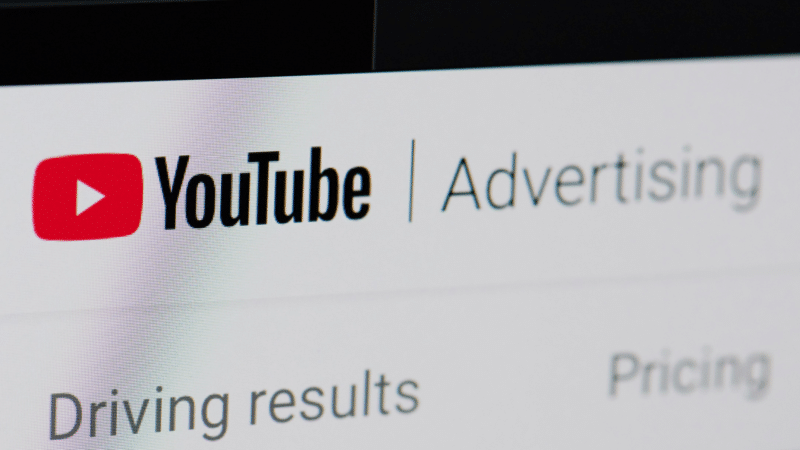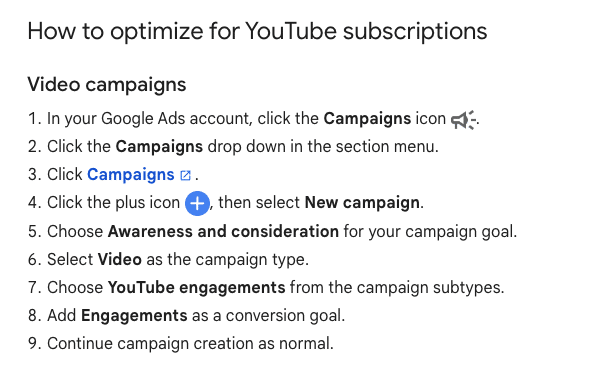
YouTube is a cornerstone of paid video advertising, offering unparalleled reach and creative possibilities.
But for marketers, it’s also one of the most challenging platforms to measure effectively.
Unlike search ads with direct conversion paths, YouTube ads often focus on awareness and consideration, leaving teams questioning their true impact.
This article breaks down the most important KPIs to track, helping you optimize performance, prove ROI and align your video efforts with business goals.
Overcoming YouTube’s measurement hurdles
YouTube advertising can be a marketer’s dream – or a data nightmare.
Despite pouring resources into creative and campaigns, teams often grapple with the question, “Are these ads really driving results?”
Google Ads expert Julie Bacchini explains two key obstacles:
- Lack of video content: Many brands hesitate to invest in video, citing the high costs and creative demands.
- Tracking challenges: “I agree with the perception of it (YouTube) being less trackable. It’s best used for awareness and consideration phases, so it might be a touch or two away from an actual conversion.”
These challenges resonate with many marketers. On X, experts Ashwin and Nitish Dhir echo this sentiment, emphasizing the difficulty of creating content and proving YouTube’s value compared to other ad channels.
Adding to this complexity is the pressure to directly attribute revenue, which often keeps brands from exploring YouTube’s upper-funnel potential.


While Google Ads provides data in the interface, the challenge is interpreting these metrics effectively and communicating them to stakeholders.
Unlike search campaigns with direct conversion paths, YouTube campaigns often focus on awareness and consideration, making measurement more complex.
Marketers often focus on views as a key performance indicator (KPI), but they tell only part of the story.
To truly gauge success, it’s crucial to go beyond views and track a range of metrics aligned with your campaign goals, whether building awareness, shaping buyer consideration or driving conversions.
Mapping YouTube metrics to your marketing goals
YouTube’s impact varies by campaign goals, making it a versatile yet complex platform to measure.
Building brand awareness
YouTube is a powerful platform for increasing brand awareness through its vast reach and targeting capabilities.
Brands can reach potential customers during moments of leisure or interest, increasing the chances of engagement.
For instance, a new lifestyle brand might create skippable ads to target young adults who like to cook during their free time or while researching on YouTube, enhancing brand awareness.
Key metrics for awareness campaigns:
- Impressions: Total number of times your ad is shown. This is a good measure of reach and potential audience exposure.
- View rate: The percentage of people who watched your ad after it was served. Measuring this can help determine the effectiveness of your creative and targeting.
- Ad recall (Brand lift study): Percentage of viewers who can recall your brand after seeing the ad.
This lifestyle brand can track impressions to measure reach and view rate for ad effectiveness.
Shaping buyer consideration
During the consideration phase, YouTube connects with in-market audiences or affinity groups, nudging them closer to a decision.
These mid-funnel campaigns focused on consideration need to focus on metrics that capture more than just immediate reactions.
For example, a tech brand might use YouTube to showcase product demos to users in-market for laptops.
Key metrics for consideration campaigns:
- Click-through rate (CTR): Indicates how compelling your ad is in driving engagement and interest, calculated by dividing the number of clicks by the number of impressions.
- Video played to: Reveals viewer drop-off points, helping optimize content for maximum engagement.
- Clicks: Tracks how many people clicked on an ad and were directed to your website.
- Consideration (Brand lift study): Percentage of viewers more likely to consider your brand after viewing the ad.
Driving conversions
YouTube may not be the first platform that comes to mind for driving direct conversions, but it can still be a powerful tool for influencing purchases.
This is particularly true during sales events or when your product appeals to consumers in a moment of impulse.
YouTube allows integration with product feeds, simplifying the purchasing process for consumers like never before.
Unlike Google Search, where intent is high, YouTube conversions often require nurturing touchpoints.
Key metrics for conversion-focused campaigns:
- View-through conversions: Conversions from viewers who saw your ad but didn’t click.
- Engaged-view conversions: Conversions from viewers who watched at least 10 seconds of your ad.
- Overall conversion rate: Percentage of viewers who took a desired action.
- Cost-per-action (CPA): The average cost for each conversion through your YouTube ad.
- Conversions (All conversion value): Tracks all conversions driven by your YouTube ads, including form submissions, purchases or app downloads.
- Return on ad spend (ROAS): Measures the revenue generated from ad spend.
These metrics help you understand the financial return on your investment and whether your YouTube ads generate desired outcomes, such as purchases or lead generation.
YouTube subscription campaigns
One underused but impactful campaign type is YouTube subscription campaigns, designed to grow your channel’s subscriber base.
To leverage this campaign type effectively:
- Choose “Maximize conversions” as your bid strategy.
- Verify that subscriptions are properly set as a conversion goal in your Google Ads settings.
Subscription campaigns are often overlooked as part of the marketing funnel but play a critical role in nurturing long-term engagement.
Unlike traditional funnel metrics focusing on immediate actions, subscription campaigns build a loyal audience by keeping your brand visible and relevant over time.
For instance, a B2B channel selling industrial machinery could use subscription campaigns to ensure their educational content, such as maintenance tips or product demonstrations, consistently appears in potential buyers’ feeds.
This approach reinforces awareness and consideration while fostering brand loyalty through ongoing touchpoints.

Dig deeper: Setting PPC goals: How to tailor KPIs and metrics for each funnel stage
Advanced measurement techniques
Custom audiences
YouTube offers a powerful way to measure campaign impact. It creates custom audiences based on specific video views and observes their behavior in search campaigns.
For example, you could create an audience of users who watched a specific video ad and add this audience to a search campaign under observation mode only.
This would allow you to analyze how users who viewed your video ads behave when they later search. Are they more likely to purchase, click, or engage with your brand?
This approach doesn’t alter the search campaign’s performance but provides invaluable insights into the downstream impact of your YouTube ads.
Brand lift studies
Google’s Brand lift Studies provide a comprehensive view of campaign success beyond clicks and conversions.
For example, a consumer goods company could measure ad recall and consideration to understand whether their YouTube campaign shifted consumer perception.
Brand lift studies are ideal for campaigns aiming to shift brand perception or test new markets.
They provide insights into key brand metrics such as:
- Ad recall: The percentage of viewers who remember seeing your ad.
- Awareness: The percentage of viewers who can recall your brand after seeing the ad.
- Consideration: The percentage of viewers more likely to consider your brand after viewing the ad.
Brand lift study metrics measure changes in consumer behavior or perception due to seeing your ads on YouTube, such as brand recall, purchase intent or consideration.
These can be measured through surveys conducted before and after the campaign.
Dig deeper: How advertisers can capitalize on vertical video
The value of earned metrics
YouTube’s value goes beyond paid actions, thanks to earned metrics – free, organic interactions viewers take after seeing your ad.
Earned metrics reveal how effectively your ad drives engagement. They include:
- Earned views: Additional views of your videos after watching your ad.
- Earned likes: Likes your videos receive post-ad exposure.
- Earned shares: Instances where viewers share your video.
- Earned subscribers: Users who subscribe after seeing your ad.
- Earned playlist additions: Times your videos are added to user playlists.

Marketers can optimize campaigns for both performance and evaluate engagement by focusing on these free insights.
While they don’t directly translate into revenue, they are valuable for measuring the organic engagement and overall interest in your brand, especially if your campaign is designed to generate buzz or generate word-of-mouth marketing.
Where do earned metrics fit into the marketing funnel?
Although these engagement metrics may seem less direct than conversions or CTR described above, they play a vital role in nurturing audiences through the funnel:
- Awareness stage: Earned views and shares extend your campaign’s reach organically, introducing your brand to new potential customers without additional spend.
- Consideration stage: Earned likes and playlist additions indicate growing interest, signaling that viewers see value in your content and may consider your offerings.
- Loyalty and retention: Earned subscribers help build a community, keeping your brand top of mind and creating ongoing touchpoints that support repeat engagement or purchases.
For instance, a fitness brand that generates earned subscribers through a YouTube ad gains a long-term advantage.
Each new video posted becomes an opportunity to re-engage and guide users toward higher-value actions, whether it’s signing up for classes or purchasing equipment.
By viewing earned metrics as part of a broader strategy to build awareness, foster consideration and drive loyalty, marketers can see how these “free” actions directly support long-term growth and engagement.
Rethinking the role of views
Views provide an immediate snapshot of reach, creating an easy-to-communicate sense of accomplishment. However, they often paint an incomplete picture.
- Shorts views: Views of less than 10 seconds and repeated plays are counted as additional views, distorting audience size.
- Forced views: Non-skippable ads often achieve a 100% view rate but don’t indicate genuine engagement.
- Passive views: Users may have the ad playing without actively watching, leading to inflated metrics that don’t represent actual interest.
For a clearer picture of campaign performance and audience engagement, marketers should prioritize deeper, actionable metrics such as:
- Brand lift.
- View-through conversions.
- Average view duration.
YouTube advertising: Tracking metrics that matter
Measuring YouTube success requires looking beyond superficial metrics like views.
By focusing on KPIs tied to awareness, consideration and conversion, you can align YouTube campaigns with broader business goals.
Remember: YouTube is most effective when integrated into a larger marketing strategy.
Share insights across teams, refine your approach continuously, and leverage YouTube’s unique strengths to drive meaningful results.
Dig deeper: YouTube’s triple threat: Mastering Feed, Shorts and Skippable ads
source https://searchengineland.com/how-to-measure-youtube-ad-success-with-kpis-for-every-marketing-goal-448988


0 Comments